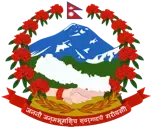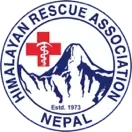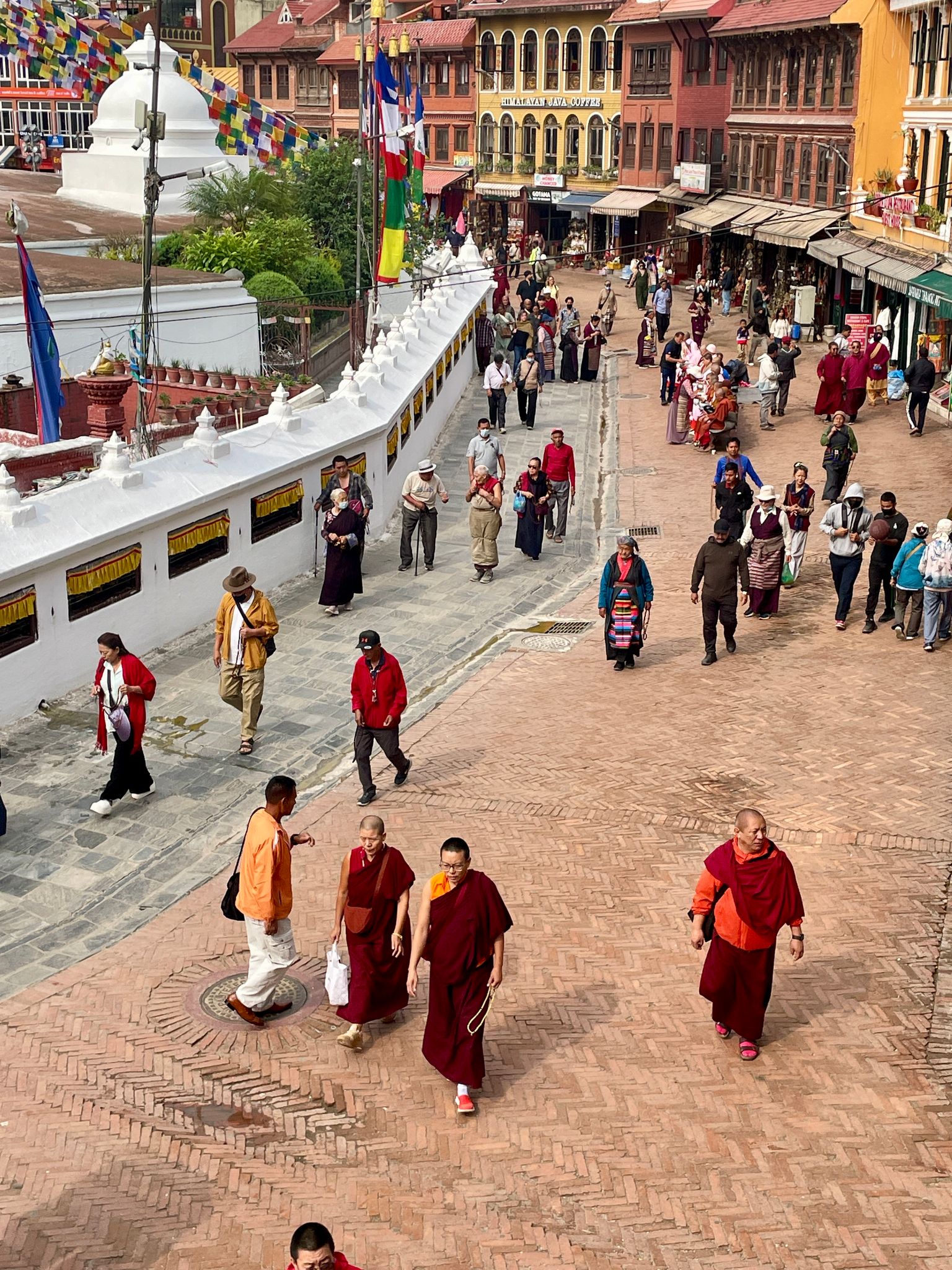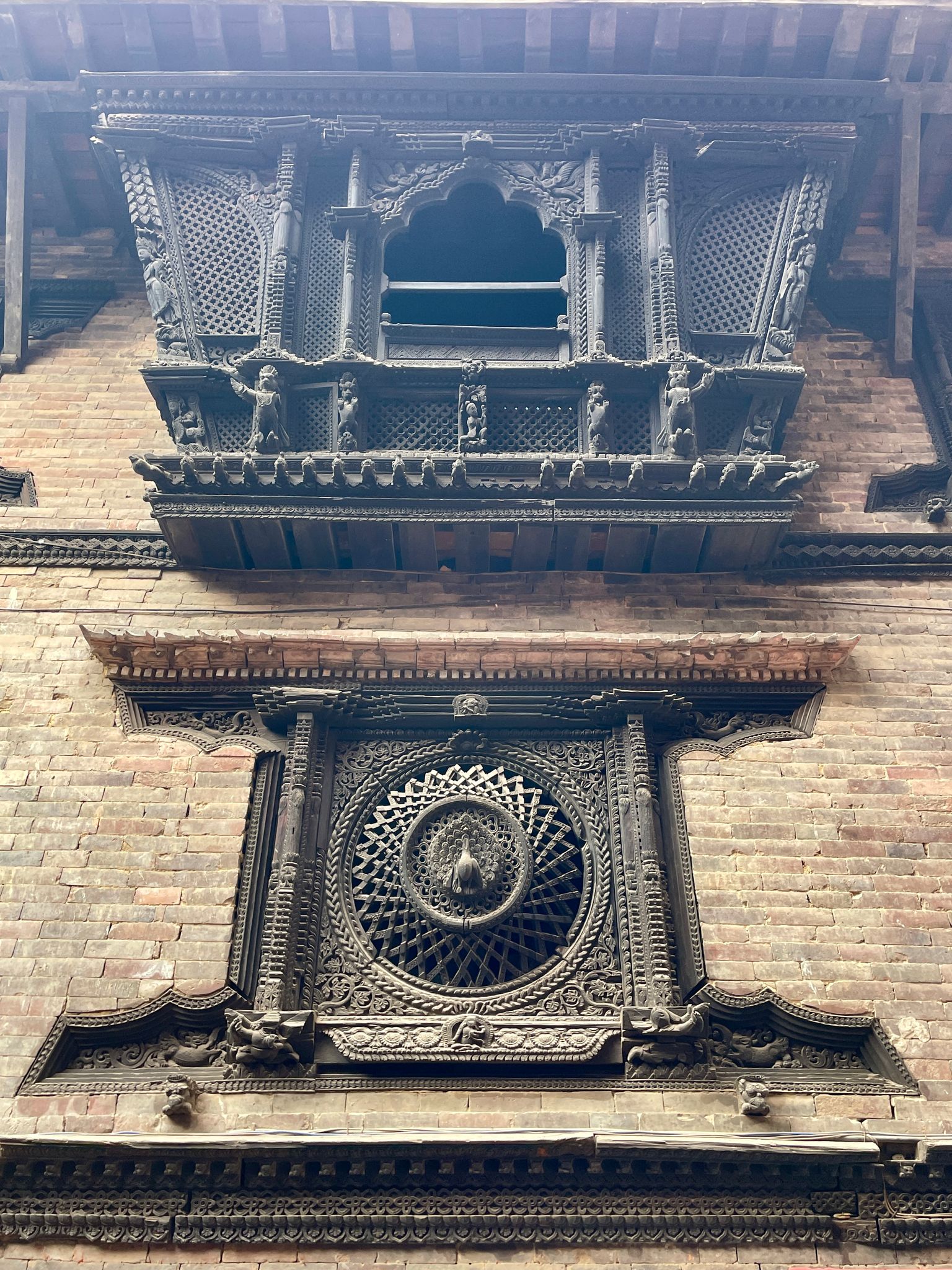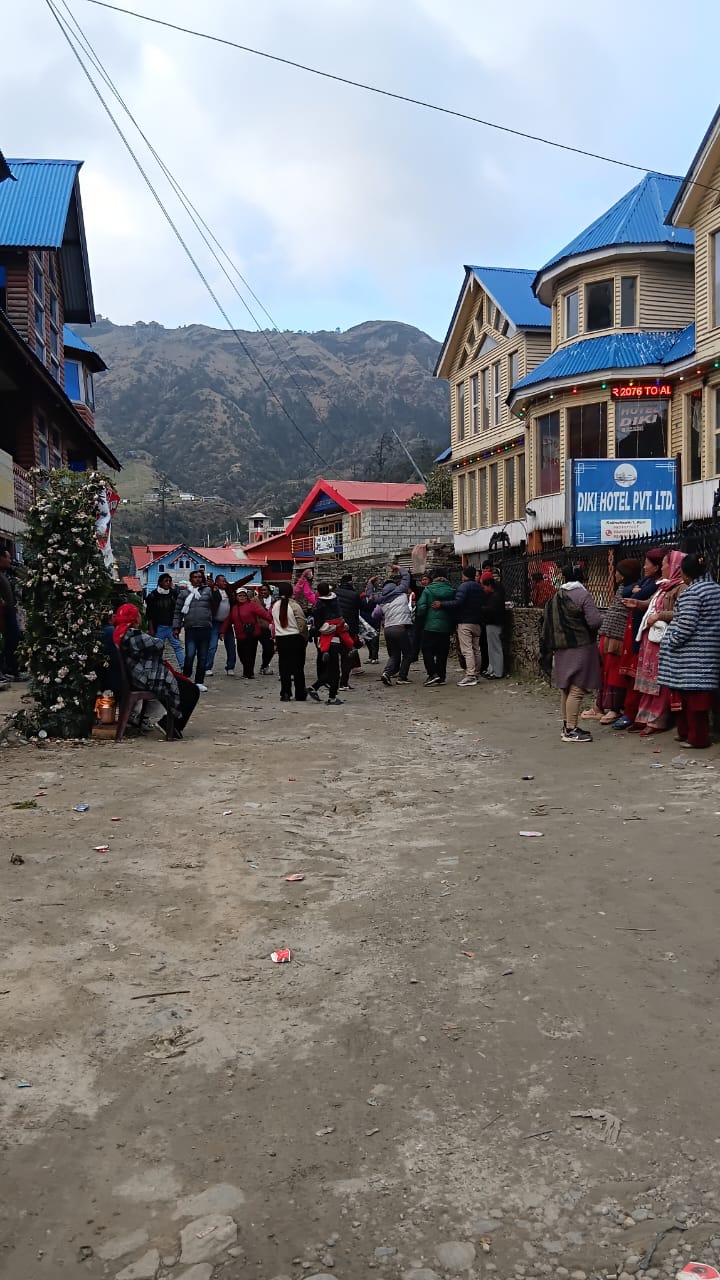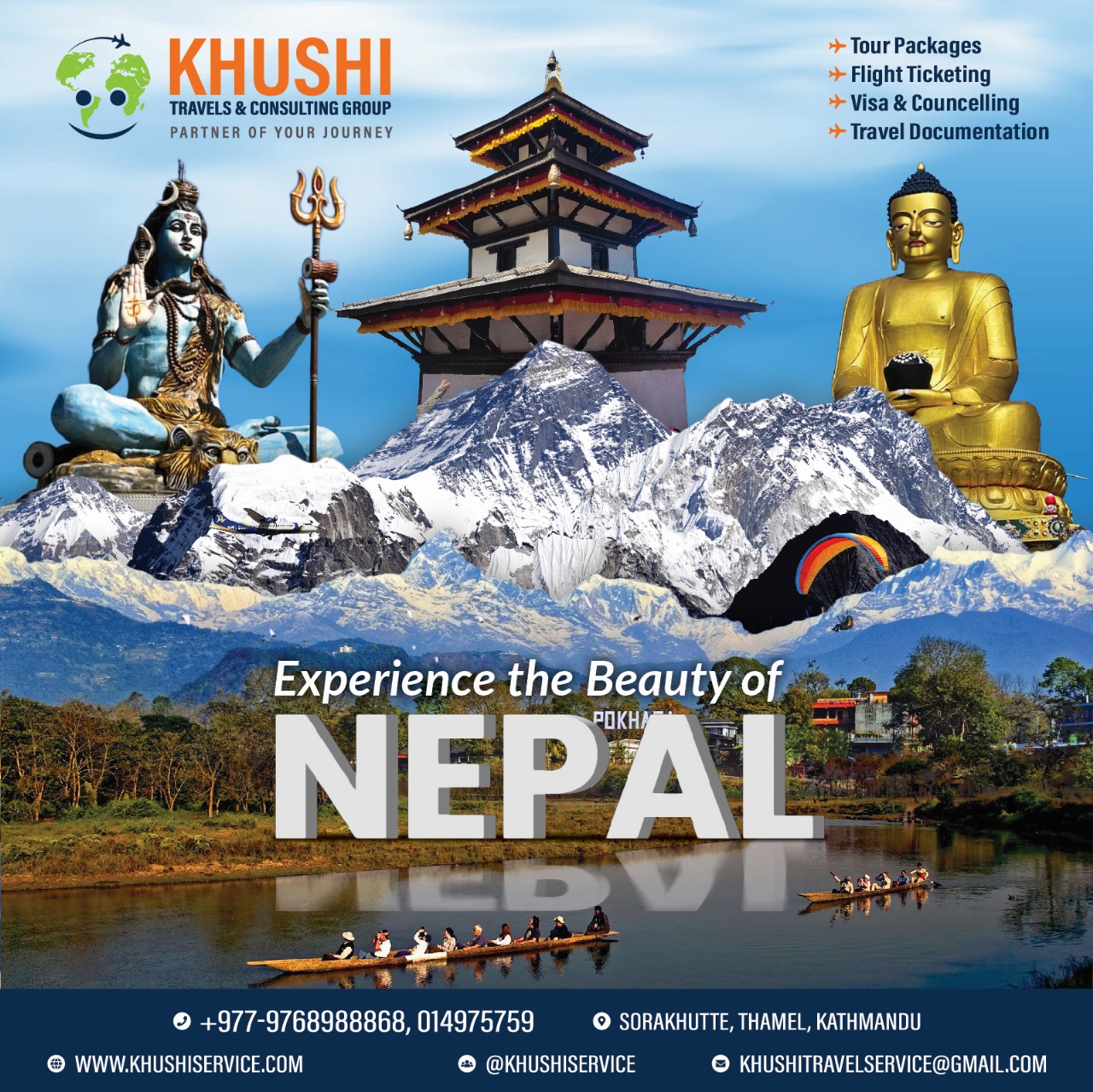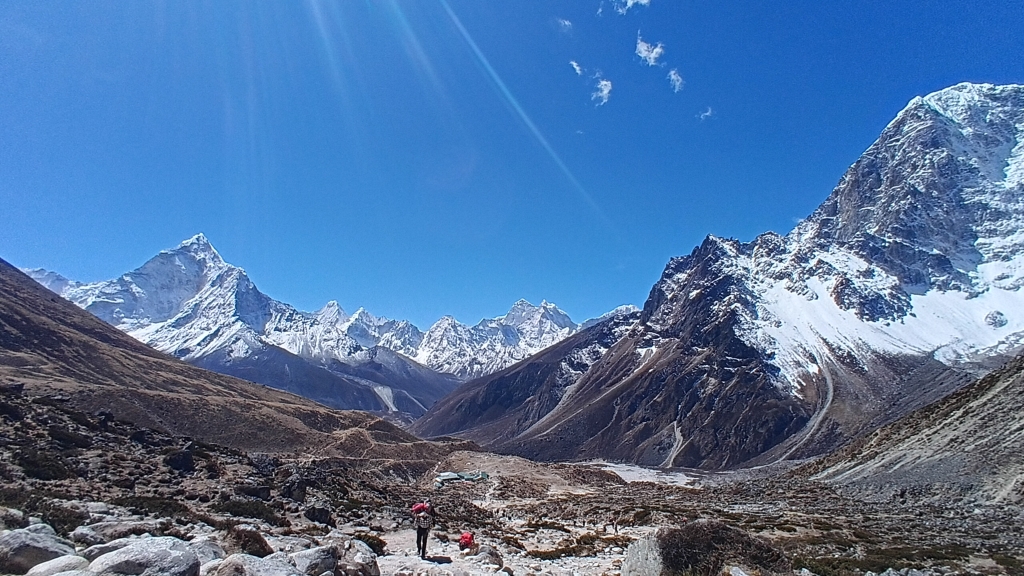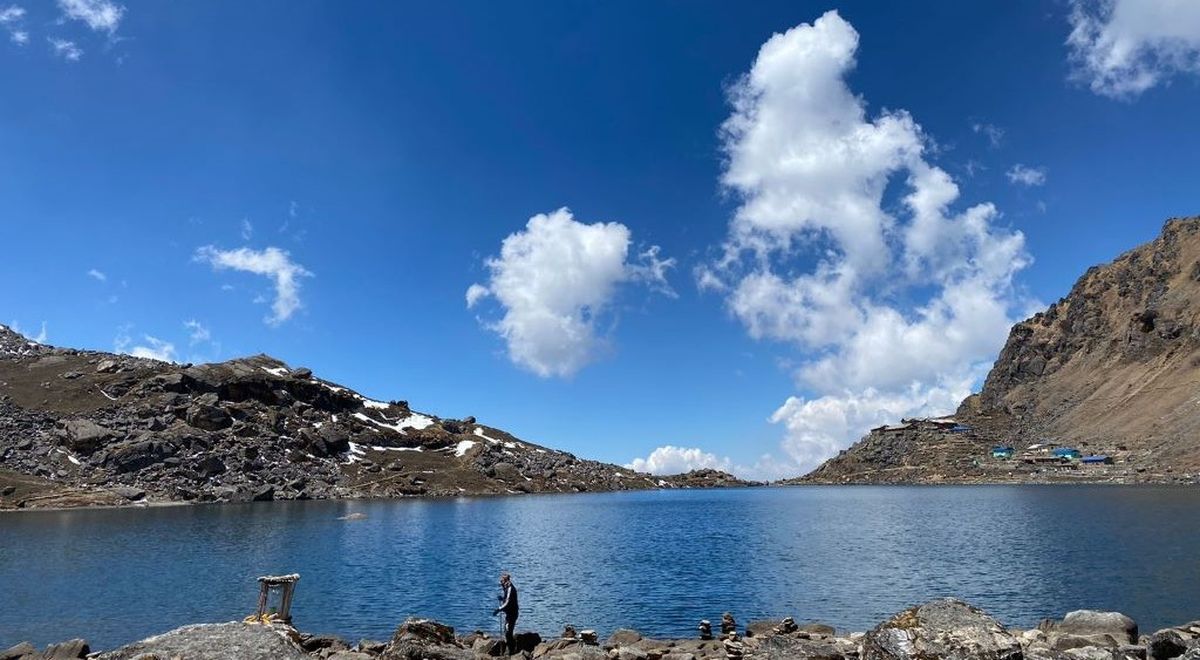

Ecotourism Programs in Nepal
Ecotourism Programs in Nepal
Nepal is a land of breathtaking mountains, diverse cultures, and extraordinary natural beauty. From the towering peaks of the Himalayas to the lush subtropical forests and vibrant local communities, the country has always attracted travelers seeking adventure and inspiration. Alongside this natural wealth, Nepal has also become a pioneer in ecotourism, where tourism is designed not just for exploration but also for conservation, community development, and cultural preservation.
At Khushi Travel and Consulting Group, we believe that travel should have a positive impact. Ecotourism programs in Nepal are powerful examples of how responsible travel can protect the environment, uplift local communities, and offer unforgettable experiences to visitors. These initiatives have been developed over the last four decades and continue to inspire sustainable travel worldwide.
In this blog, we delve into the history, projects, and achievements of ecotourism in Nepal, while showcasing how Khushi Travel and Consulting Group connects travelers with these meaningful experiences.
The Beginning of Ecotourism in Nepal
Conservation activities in Nepal began in the early 1970s, with several natural sites declared as protected areas by 1980. However, genuine ecotourism efforts only started after the launch of the Annapurna Conservation Area Project (ACAP) in 1986. This landmark initiative marked a new era where tourism was linked with conservation and community development.
In 1992, ACAP introduced a model ecotourism project called the Ghalekharka-Sikles Ecotourism Project (GSEP), which later became known as the Circuit Trekking Route and Ecotourism Development Project (CTREDP). This was Nepal’s first genuine ecotourism project, aimed at easing tourist pressure on heavily trafficked trails and promoting alternative destinations sustainably.
That same year, the Sagarmatha Pollution Control Committee (SPCC) was established to manage waste in the Everest region. Soon after, other important projects followed:
- Kathmandu Environmental Education Project (KEEP) in 1994.
- Upper Mustang Conservation and Development Project (UMCDP) in 1995.
- Manaslu Ecotourism Project in 1997, later upgraded into the Manaslu Conservation Area Project (MCAP).
- Kanchenjunga Conservation Area Project (KCAP) in 1998.
- Langtang Ecotourism Project (LEP) supported by UNDP.
- Tourism for Poverty Alleviation Project (TRPAP) in 2000.
Each of these projects carried elements of ecotourism, community involvement, natural resource conservation, and sustainable tourism development. Collectively, these initiatives helped position Nepal as a global leader in community-based ecotourism and a top destination for eco-conscious travelers.
Major Ecotourism Programmers in Nepal
1. Annapurna Conservation Area Project (ACAP)
The Annapurna Conservation Area is Nepal’s largest protected area, covering 7,629 square kilometers. Established in 1986, ACAP became the first conservation project in Nepal to adopt a community-based approach, allowing local people to live within and actively manage the area. The region is home to remarkable natural wonders such as:
- The world’s deepest gorge, the Kali Gandaki.
- The world’s highest lake, Tilicho.
- The sacred peak Machhapuchhre (Fishtail).
- The stunning Trans-Himalayan desert of Upper Mustang.
Biologically, the area boasts 1,226 species of flowering plants, 101 species of mammals, and 474 species of birds. Rare animals such as the snow leopard and musk deer live here. Culturally, the region is equally diverse, with Gurungs, Thakalis, Magars, and Tibetan-origin Lobas preserving their rich traditions.
ACAP is also the most popular trekking destination in Nepal, attracting more than 60% of all trekkers in the country. Its initiatives include forest conservation, wildlife protection, alternative energy promotion, women empowerment programmes, and cultural preservation.
2. Manaslu Conservation Area Project (MCAP)
Located in the Gorkha district, MCAP was launched in 1997 and officially declared in 1998. Covering 1,663 square kilometers, it protects the breathtaking Manaslu region, home to the eighth-highest peak in the world (8,163 m). The project follows the ACAP model but adapts it to local needs. Its programmers focus on:
- Alternative energy development through micro-hydro projects.
- Conservation education and awareness.
- Community development, including drinking water schemes and bridge construction.
- Women's empowerment through literacy and health programs.
- Heritage conservation of ancient monasteries and cultural traditions.
Despite challenges due to security issues in the past, MCAP remains an important ecotourism destination, offering remote trekking experiences with both natural and cultural richness.
3. Sagarmatha Pollution Control Committee (SPCC)
The Everest region, which includes Sagarmatha National Park, is one of the most iconic trekking destinations in the world. With thousands of trekkers and climbers visiting annually, managing waste has been a significant challenge due to the fragile environment and high visitor numbers. To address this, the SPCC was formed in 1992. Its main achievements include:
- Establishing waste management systems on trekking trails.
- Introducing rubbish collection and incineration methods.
- Organizing clean-up campaigns on Everest expeditions.
- Educating locals and visitors about responsible trekking.
Thanks to SPCC, the Everest region remains cleaner and more sustainable, despite its heavy tourism flow.
4. Kathmandu Environmental Education Project (KEEP)
Founded in 1994, KEEP is based in Kathmandu and focuses on raising awareness about responsible tourism among both travelers and Nepali citizens. Its key initiatives include:
- Running eco-friendly trekking workshops.
- Promoting responsible travel guidelines.
- Supporting porter welfare and environmental education.
For travelers preparing to trek, KEEP serves as a vital resource for understanding sustainable practices.
5. Langtang Ecotourism Project (LEP)
The Langtang region, known for its scenic valleys and rich Tamang culture, was supported by UNDP through the Partnership for Quality Tourism Project (PQTP). The project aimed to improve environmental conditions, tourism quality, and community involvement.
Today, Langtang continues to attract trekkers seeking peaceful trails, authentic homestays, and eco-conscious adventures.
6. Kanchenjunga Conservation Area Project (KCAP)
Launched by the World Wildlife Fund (WWF) in 1998, KCAP protects the eastern Himalayan region around Mount Kanchenjunga (8,586 m). Covering 2,035 square kilometers, it is home to rare wildlife such as snow leopards and red pandas, as well as diverse plant species. KCAP emphasizes:
- Biodiversity conservation.
- Community-managed tourism.
- Cultural heritage preservation of ethnic groups like Sherpas, Limbus, and Rais.
Trekkers who venture into Kanchenjunga experience some of Nepal’s most remote and pristine environments.
7. Tourism for Poverty Alleviation Project (TRPAP)
Started in 2000, TRPAP was a collaborative project of the Government of Nepal and several international agencies. Its primary aim was poverty reduction through tourism.
The project combined ecotourism principles with community-based tourism, ensuring local people benefited directly from trekking, homestays, handicrafts, and cultural performances. It demonstrated how tourism can be a tool for social development.
Key Features of Ecotourism in Nepal
From these projects, we can identify some common themes that define ecotourism in Nepal:
- Community Involvement: Local people actively participate in planning, decision-making, and management.
- Conservation of Natural Resources: Protection of forests, wildlife, and water systems through environmentally sustainable practices.
- Cultural Preservation: Integrating festivals, monasteries, traditional dances, and indigenous knowledge into the tourism experience.
- Alternative Energy and Sustainable Technology: Promoting micro-hydro, solar, biogas, and improved stoves to reduce reliance on firewood and protect forest ecosystems.
- Education and Awareness: Programs like KEEP and CEEP (Conservation Education & Extension Programs) raise awareness among both locals and visitors about responsible tourism.
- Women's Empowerment: Community initiatives led by women provide microcredit, skills training, and income-generating opportunities.
- Poverty Alleviation: Ecotourism creates jobs for guides, porters, lodge operators, artisans, and other local stakeholders, ensuring tourism revenues benefit rural communities directly.
Achievements of Ecotourism in Nepal
Over the past four decades, ecotourism programs in Nepal have achieved remarkable results:
- Environmental Conservation: Thousands of hectares of land have been reforested, rare species like snow leopards are being monitored, and pollution control measures have been implemented.
- Infrastructure Development: Trails, suspension bridges, drinking water schemes, schools, and health posts have been built with community involvement.
- Tourism Benefits: Regions like Annapurna, Everest, Manaslu, and Kanchenjunga have become world-class trekking destinations while promoting responsible tourism.
- Community Empowerment: Conservation Area Management Committees (CAMCs) and mother groups ensure that local voices are heard in decision-making.
- Cultural Preservation: Support for monasteries, festivals, and eco-museums has kept traditions alive while sharing them with visitors.
These achievements make Nepal not only a trekking paradise but also a global leader in community-based ecotourism.
Challenges of Ecotourism in Nepal
While the progress has been impressive, there are still challenges to overcome:
- Increasing tourist numbers risk turning ecotourism into mass tourism.
- Waste management in remote areas remains difficult.
- Unequal distribution of tourism benefits sometimes leaves smaller communities behind.
- Climate change is affecting glaciers, biodiversity, and trekking trails.
- Political and economic instability can slow down project implementation.
Despite these challenges, Nepal continues to refine its ecotourism model, learning from both successes and shortcomings.
How Khushi Travel and Consulting Group Supports Ecotourism
Khushi Travel and Consulting Group is committed to making every trip environmentally friendly by following ecotourism principles that protect nature and support local communities. Our approach includes:
- Eco-friendly Treks and Tours: We promote trekking routes that follow conservation guidelines, reduce waste, and respect local traditions.
- Community-Based Tourism: We encourage travelers to stay in homestays, buy local products, and interact with communities.
- Education for Travelers: Before every trip, we brief our guests on responsible travel practices.
- Support to Local Initiatives: We collaborate with local conservation projects and contribute to community development activities.
- Women and Youth Empowerment: We work with women’s groups and young guides to create opportunities in tourism.
By traveling with Khushi Travel and Consulting Group, visitors not only experience Nepal’s natural and cultural wonders but also contribute to its sustainable future.
Conclusion
Nepal’s ecotourism journey is a story of resilience, innovation, and collaboration. From the Annapurna Conservation Area to Kanchenjunga, from Sagarmatha’s pollution control to TRPAP’s poverty alleviation, each project reflects a vision where tourism serves both people and nature.
For travelers, these programmers offer more than just trekking routes; they provide opportunities to be part of a global sustainability movement. And for Nepal, they demonstrate that protecting the environment and uplifting communities can go hand in hand.
At Khushi Travel and Consulting Group, we proudly connect our guests with these meaningful experiences. Every step taken on Nepal’s eco-trails is not just a journey into the Himalayas, but also a step toward a greener and more equitable future.
Similar Blogs
We are associated with

